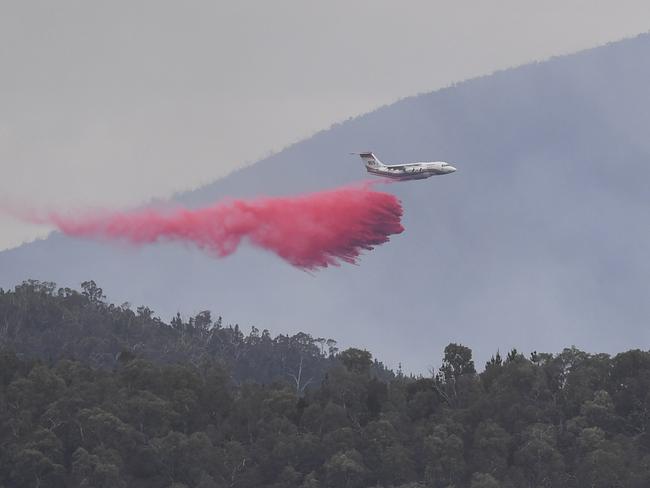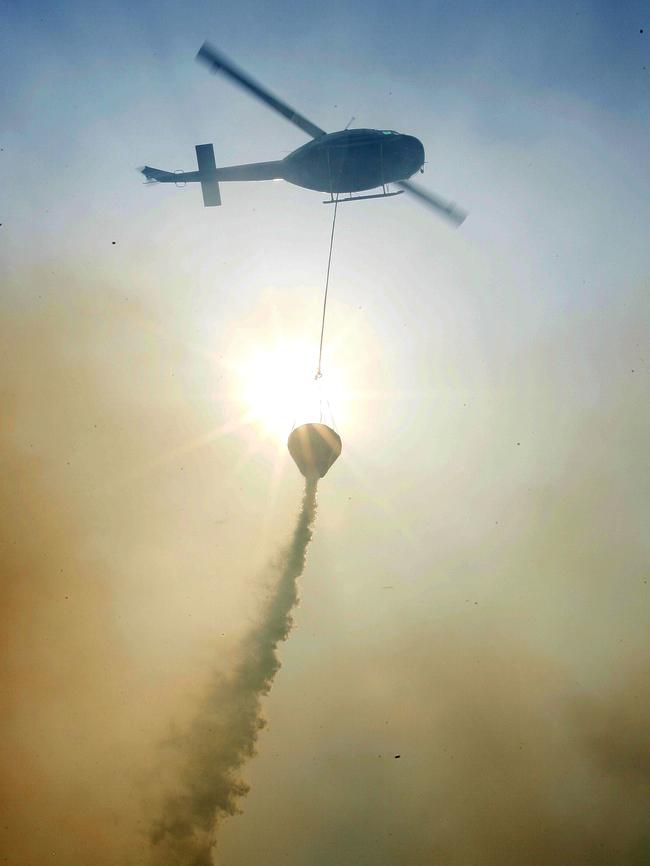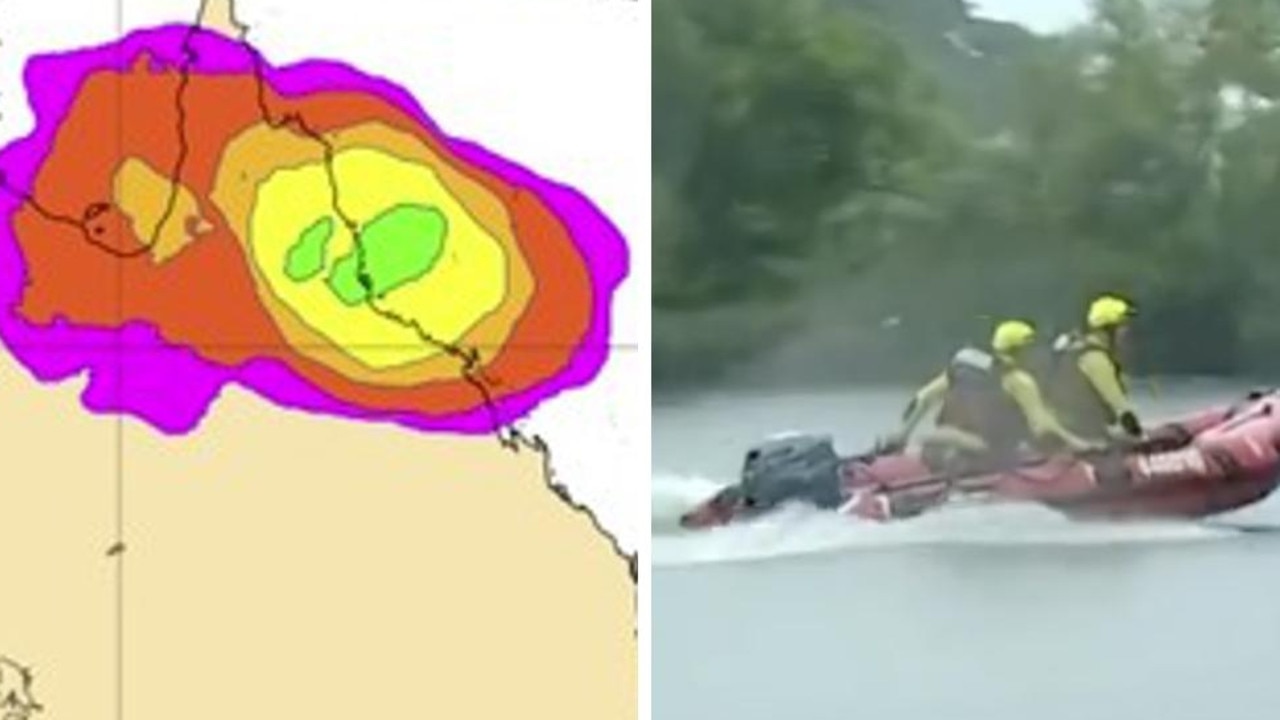How Australian firefighting units battle blazes when there’s no water because of drought
Faced with extreme drought conditions, rural fire services are increasingly having to find ways to fight bushfires without water. Here’s how they do it.

National
Don't miss out on the headlines from National. Followed categories will be added to My News.
Extreme drought conditions in many parts of the country are forcing rural fire services to find ways to fight blazes without water.
Fire services from both New South Wales and Queensland raised the issue in the Australian Seasonal Bushfire Outlook in late August, which showed a massive stretch of the east coast stretching from Gippsland to Townsville was at elevated fire risk this season.
Queensland’s bushfire season arrived with a vengeance this week, with some 50 blazes underway, 20 structures lost and catastrophic conditions declared in some parts of the state. More than 65 per cent of the state is in drought.
In New South Wales that figure is a staggering 95 per cent.
A lack of rainfall means there is little growth to burn in some regions, but in other areas with a significant fuel load there is a low level of water available for fire suppression.

Queensland Fire and Emergency Services Superintendent James Haig said the best way to control fires was “not have them start”.
“When things are that dry it’s really important people are aware that they can start a fire even by mowing or slashing grass. A rock under a mower can easily spark a fire,” he said.
If a blaze does start, Supt Haig encouraged people to douse it themselves if they had the capacity to do so, and to call Triple 0 quickly if they did not.
“That early stage is really important. We’ll be happy to hear from you even if we’ve already heard about it,” he said.
Severe drought in many areas meant previously accessible water sources such as dams on farms were no longer necessarily an option for fire crews, he said.
One solution in such a situation is to deploy “portable reservoirs”: bulk tankers, capable of holding thousands of litres, which are used to refill trucks on the front line and moved around as needed.

Dry firefighting techniques are also increasingly being used by crews when battling blazes, and not just in Australia: fire services in California have faced similar issues through many years of drought there.
A spokesman for the NSW RFS told News Corp that such techniques “are not new for our fire fighters, but they haven’t previously been required in such proportions as we’re seeing now in New South Wales.”
In addition to back burning — which has previously made some big fire events worse — one strategy being used is what the services refer to as “heavy plant”: bringing in big machinery like bulldozers and graders to construct containment lines.
In the case of grass fires, heavy plant can be used to smother fires rather than douse them.
Chainsaws are also used on fallen logs to minimise how much will burn — a process firefighters call “butting off”.
“Instead of putting a lot of water on a log, we put a chainsaw through it, and let it burn itself out,” Supt Haig said.

Using fire retardants and gels on vegetation in a blaze’s path can also help, as the tremendous heat generated by bushfires means water deployed in the fight can evaporate quickly. The retarding chemicals make the sprayed water more effective but they are not a panacea, as they can be washed or blow off vegetation in high winds.
One increasingly powerful and effective tool for firefighters is data.
“The remote sensing data from our predictive unit gives us a picture of the state and how much fuel there is,” said Supt Haig.
“That lets us identify where we’ve got fuel loads — and that in turn informs the predictions of how the fire will behave. We monitor and manage our fuel loads very closely — we’ll be aware of what they are.”
The data is supplemented by on-the-ground reports during a firefight, he added.

Where possible, crews use non-potable water to fight fires, but this is not always possible, or desirable.
“Sea water can be used, and we do in emergencies. It just depends on where the fire is burning,” the RFS spokesman said.
“When you dump salt water on bushland it can have a detrimental effect, especially in areas close to rivers and creeks.”
In addition to the environmental concerns, there are practical ones.
“Pumps don’t like sea water,” Supt Haig said.
Fire crews are also acutely aware of how their firefighting efforts might impact local drought-affected communities after the blazes have been extinguished, he said.


“We’ll replace water if we draw from a farmer’s dam. We want to make sure when we’ve managed the fire, the local community is not impacted by the water we’ve drawn from them,” he said.
The NSW RFS stressed that land owners should not abrogate their responsibility for being fire safe.
“We can’t understate the responsibility of land holders to ensure their properties are well prepared,” the spokesman said. “You can’t expect a fire truck, a helicopter or a plane to appear. A well-prepared home gives you a better chance of surviving.”
Originally published as How Australian firefighting units battle blazes when there’s no water because of drought


